In the heart of downtown Atlanta, not far from City Hall, and just blocks from Georgia State’s sprawling campus and the future site of the $1.4 billion Mercedes-Benz Stadium—where Atlanta’s United FC pro soccer team and the Atlanta Falcons will play—sits the Five Points MARTA train station. It is the largest and busiest train station in Atlanta, and is currently home to the world’s first soccer field inside a train station.
On a warm Saturday, Lauren Desmond, director of coaching and education for Soccer in the Streets, arrives to open the field that hosts their youth soccer program four days a week, complete with coaches and volunteers. The 66 by 99 feet of bright green turf sits nestled between corporate offices and local businesses, where it replaced a concrete amphitheater originally built in 1978 that sat unused for decades. Now the headquarters for Soccer in the Streets’ Station Soccer, the site sits above the bustling tracks and main hub of Atlanta’s transit system. Kids from across Atlanta arrive with their parents or wander over from nearby neighborhoods such as Vine City, to enjoy fresh air and exercise on a beautiful 60-degree day.
The idea for Station Soccer was dreamt up by Sanjay Patel in late 2013. Patel, a commercial development consultant who has lived in Atlanta for 18 years, was back home visiting his sister in London and using the train to get around, when he noticed a group of kids with a soccer ball. When they got off at the same station as he did, he realized they were headed to play soccer at a group of nearby fields. That’s when it hit him: Build fields near the train stations. At the time, Patel was using MARTA, the network of buses and trains that make up Atlanta’s transit system, to commute to work downtown and to his role on the board at Soccer in the Streets, a local nonprofit “social impact soccer organization” that aims to teach life skills alongside soccer in underserved communities throughout the city.
“One of the biggest hurdles for us [at Soccer in the Streets] is transportation,” Patel says. “I thought, Well, why couldn’t we do this in MARTA parking lots? I came back to Atlanta and started visiting all the stations to see what kind of space they had and realized they had a lot of space.”
“Sanjay came back with the idea that we build fields at MARTA stations and connect these communities through transit and sport,” says Phil Hill, who started out as a volunteer in 1998 and is now executive director of Soccer in the Streets, “He pestered the hell of MARTA for two years.” Everyone told him he was insane. Patel knew someone in charge of development at MARTA and told them he was interested in potentially building soccer fields at train stations. “She said, ‘Interesting idea, get me something on paper,” he remembers. He visited every MARTA station to scope out terrain, gauge their use, and see how much parking was available on their busiest day. He also considered the demographics at each station, pinpointing low-income communities where programs with Soccer in the Streets would be most effective, and drew out a plan where it would be possible to build 10 fields.
After receiving grant money from the Atlanta United Foundation, Patel reached out to GreenFields USA, the turf supplier for the Mercedes-Benz Stadium. They agreed to be a sponsor and provided and installed the turf at a discounted rate. The lights—critical for the paid adult leagues the field hosts at night to help fund the free youth programs—came from Brazil, leftover fixtures from the Olympics that were donated and installed with the help of grant money provided by the U.S. Soccer Federation and a partnership with Musco/Cree Lighting. Keith Parker, CEO of MARTA, also signed on as a sponsor, leaving the final stamp of approval to the Federal Transit Administration. When the FTA asked if they could show them an example of where this had been done before they couldn’t find one. “We quickly realized we’d be building the first one in the world,” Patel says.
[quote position="left" is_quote="true"]If it works it will create a blueprint for the rest of the country for how to get soccer into urban communities.[/quote]
Though the Soccer in the Streets organization has been around since the late ’80s, providing soccer programs mainly to schools and community centers, the popularity of the sport in Atlanta has experienced an ebb and flow. But soccer’s popularity has grown, and the addition of professional teams in the United States has made the sport more appealing, along with the popularity of video games like FIFA. Parents have also grown more hesitant about allowing their children to play football for fear of head injuries, particularly in African-American communities in Atlanta, according to Hill.
“Soccer is a really simple game to understand,” says Jill Robbins, who has been involved with youth soccer for over 30 years and is chief program officer at Soccer in the Streets. “It’s inclusive. You don’t have to be big or fast, and it’s a way to bring people together that normally wouldn’t be together,” she adds as she looks out onto the field. There 5-year-old Achilles dribbles up the field as 9-year-old Jesus and his friend Francisco, 10, laugh and chase after him. Nearby, 4-year-old twins Cadence and Harmony put pinnies on, about to play soccer here for the first time ever. “Everyone can play and have fun. It’s exercise. It’s a common language. It’s just the perfect game,” she says.
Soccer in the Streets sees the benefits of the sport, not only in terms of its intrinsic values such as teaching teamwork, organization, fitness, and health, but as a valuable way to teach life lessons. “It’s a social experiment first and a soccer experiment after,” Hill says. “It just happens that if it works, it will create a blueprint for the rest of the country for how to get soccer into urban communities, which still doesn’t happen.” Patel agrees, “The problem in the past is it has been for the white middle class in America. Really, Soccer in the Streets shouldn’t exist. Where most of us come from everyone has access. ”
“The soccer system [in the United States] was developed as a middle and upper class sport,” adds Hill. “And the way that the whole club model developed here immediately precluded these kids, predominantly in urban communities, from playing.” Not only that, but Soccer in the Streets has also found that basketball and football programs tend to exclude girls.
Heather Alhadeff, a city planner who lives downtown, happily supports the cause by playing in the coed adult league at Five Points. Proceeds from these weeknight games are used to fund the youth programs. “I’ve always been very impressed with Soccer in the Streets as a program,” she says. “I started playing soccer when I was 5, and as a girl in the South, I was a rarity. I also don’t own a car, so I'm a big supporter of biking and transit. When they went for this idea of Station Soccer, it honestly brought a tear to my eye,” Alhadeff says. “To have this wasted space become so lively with squeals of kids and high fives, everybody getting exercise and meeting people here from so many different countries, it’s just really fun.”
Atlanta’s burgeoning refugee communities, where the kids know and love soccer and can use it to assimilate into society, have greatly benefited from the program, according to Hill. The organization recently started teen outreach with the help of homeless youth organizations Covenant House and Lost-n-Found Youth, reaching out to what they refer to as Atlanta’s disconnected youth. “One thing that is happening that is really apparent is how this is just changing the atmosphere of the space,” explains Robbins. “There’s an earnest effort to be a part of the community, not to judge the community, but to make it a welcoming and inclusive space.” Phil Hill emphasizes that giving youth in the area something to do has brought positive results. “Our goal is not really to get them to be the best soccer players in the world, it’s to give them an opportunity in life,” he says. With the help of grants from the Coca-Cola Foundation, the Arthur M. Blank Foundation, Women’s Sports Foundation, and FIFA’s Football for Hope, Soccer in the Streets has expanded its programs to include a curriculum that incorporates life skills along with soccer instruction. “For the older kids, we launched something called Life Works, which is our program that readies them for employment or helps get them ready for school,” explains Hill.
When I meet with Shell Ramirez, Life Works program manager, the following Friday afternoon, she was busy welcoming 25 young adults—ranging in age from 18 to 23—who are here with a coach from Soccer in the Streets to expel some energy and play for two hours. Lunch, healthy snacks, and water are provided, and though many of the kids learned about Station Soccer at Five Points through Covenant House or Lost-n-Found, there are many young adults who found their way by just passing through. Many of them don’t work or attend school, and this open session, now in its third week, has been an unexpected success with attendance growing each week. “You have to connect to them somehow, to reconnect them to other opportunities so they’re not just wandering around looking for trouble,” says Robbins. “It’s a community outreach for kids in this situation, and that can open the door for them to gain access to services that maybe they’re in need of that they don’t even know exist.”
This homeless and at-risk outreach has been particularly heartwarming for Patel, who spends a lot of time visiting the field, including the first day of the program a few weeks ago. “It was probably one of my favorite days at the station,” he says. “It has been proven that soccer actually brings people together. Quite amazing to have kids that normally could be doing anything—a plethora of things—out here having fun.”
One of the young men, 20-year-old Ricardo Mims, has been in attendance each week. “I like that it gives us the opportunity to come out here and have fun,” he says. “I do love soccer, and it allows me to express myself with a sport that is pretty important to me.” That sentiment is echoed by 21-year-old Justin Gamble, who is just as impressed with Station Soccer. “I come every week. It’s a great stress-reliever and it’s just fun. I had never even been to Five Points before I started playing down here,” he tells me, “and I definitely never thought anyone would put a soccer field in the middle of a train station.”
Patel’s original vision was to construct fields at 10 stations and create what he calls the League of Stations, where 10 teams, built from the communities surrounding each station, could play each other using the train as their transportation. He’s passionate, not only about encouraging people to rely less on cars and more on MARTA, but also about residents, particularly kids, exploring other communities in neighborhoods all over Atlanta. A second proposed field is already fully funded even though its still in the conceptual stage, but there are nearby neighborhoods that could benefit from the program, particularly on Atlanta’s West Side. But Patel has continued to expand his vision of what these fields could become. They recently launched a design challenge, “Tiny Classroom” in conjunction with Tiny House Atlanta in hopes of creating shipping container-sized classrooms for each Station Soccer location in order to add a place where kids can do homework or play FIFA against each other online. “Imagine if you’re in Brookhaven and I’m in College Park and we’re playing each other online, and then next week we get to actually meet on the field. I think we’re onto something,” he says.
“Reactivating dormant areas like this, it’s such a dream,” says Alhadeff. “It has just been a positive for everyone involved. It’s just a win, win, win, win, win.” But for Patel, the ideas don’t stop coming. He’d like to work with MARTA to create a discounted soccer transit card and he thinks about ways the organization can partner with other brands. Next, he’ll be heading to Denver and San Francisco to see if Station Soccer is something they may be able to copy. “There is something called the Homeless World Cup,” and one of his goals is to have a team compete in that within the next year, “The greatest thing we can do at Soccer in the Streets is open this sport up to everyone.”















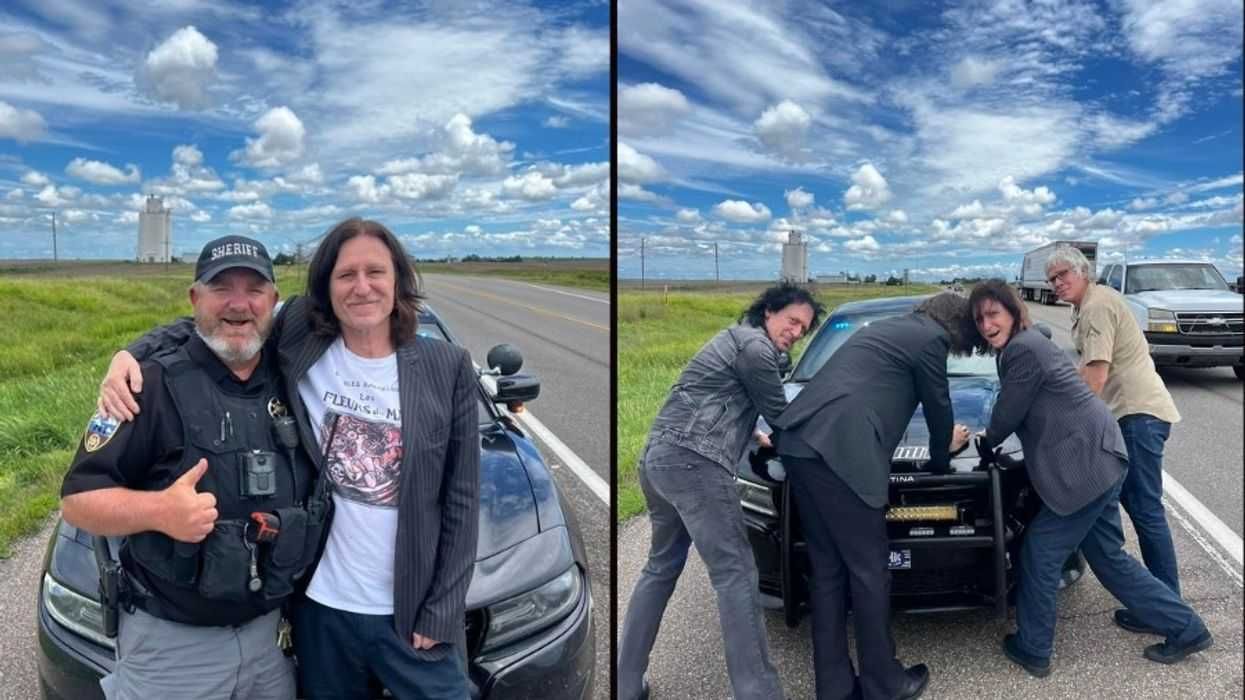
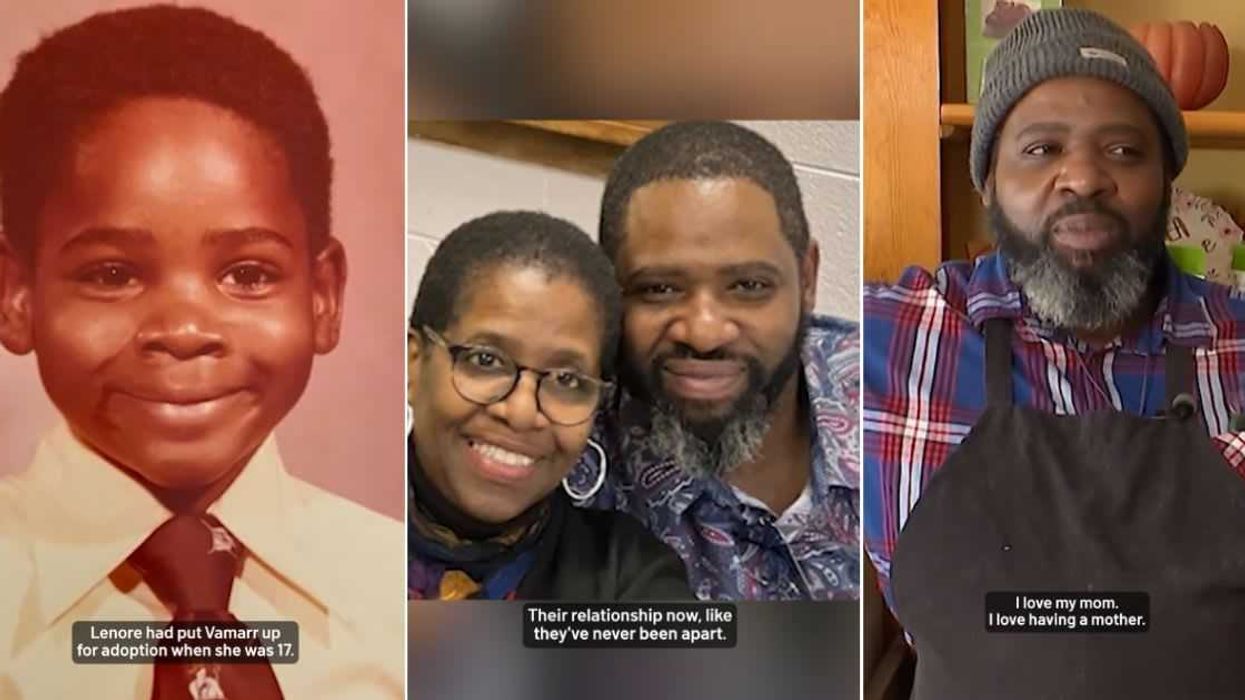
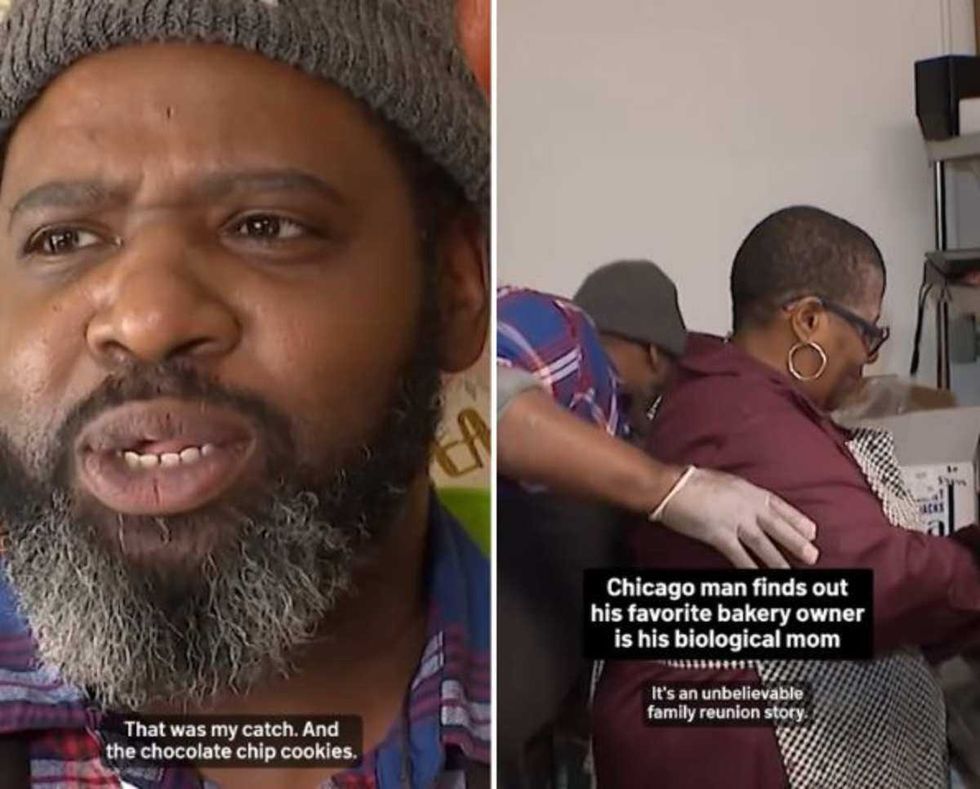 Screenshots of the man talking to the camera and with his momTikTok |
Screenshots of the man talking to the camera and with his momTikTok | 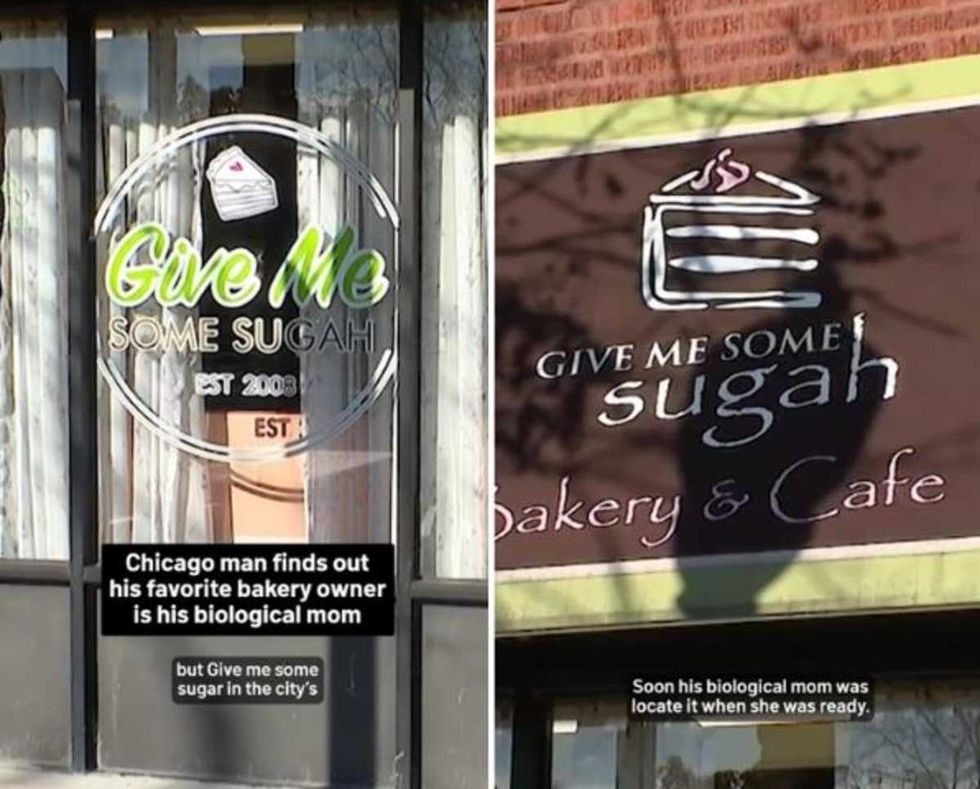 Screenshots of the bakery Image Source: TikTok |
Screenshots of the bakery Image Source: TikTok | 
 A woman hands out food to a homeless personCanva
A woman hands out food to a homeless personCanva A female artist in her studioCanva
A female artist in her studioCanva A woman smiling in front of her computerCanva
A woman smiling in front of her computerCanva  A woman holds a cup of coffee while looking outside her windowCanva
A woman holds a cup of coffee while looking outside her windowCanva  A woman flexes her bicepCanva
A woman flexes her bicepCanva  A woman cooking in her kitchenCanva
A woman cooking in her kitchenCanva  Two women console each otherCanva
Two women console each otherCanva  Two women talking to each otherCanva
Two women talking to each otherCanva  Two people having a lively conversationCanva
Two people having a lively conversationCanva  Two women embrace in a hugCanva
Two women embrace in a hugCanva 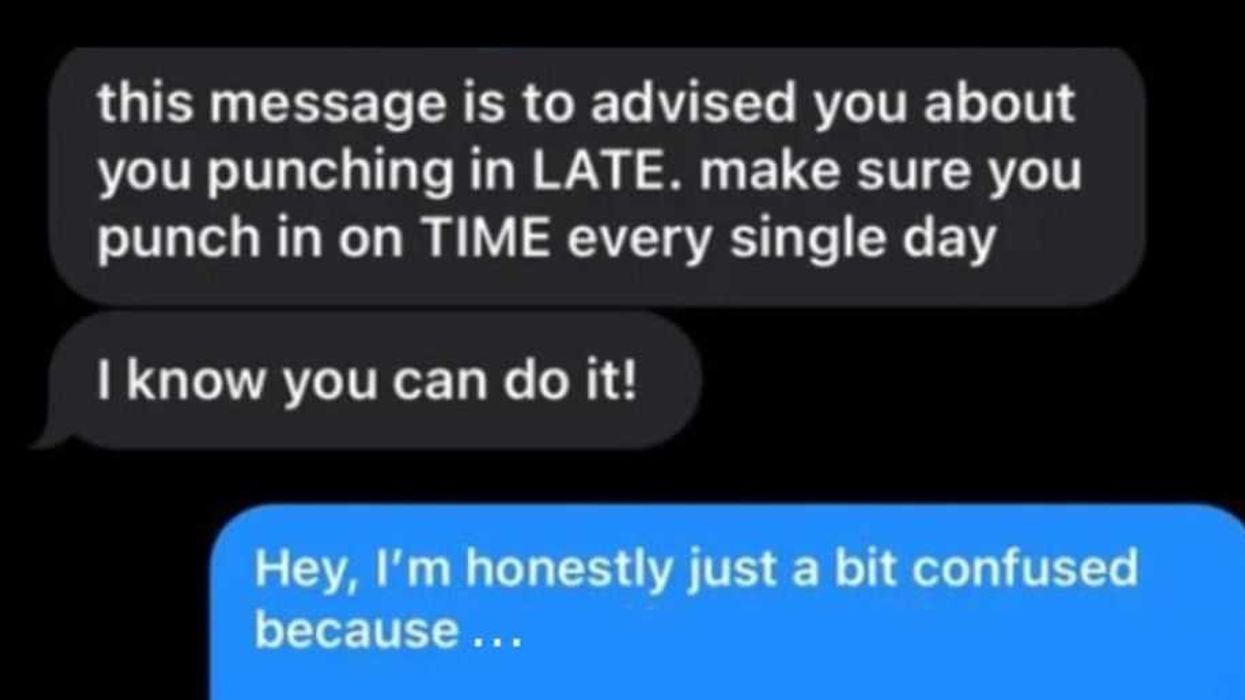
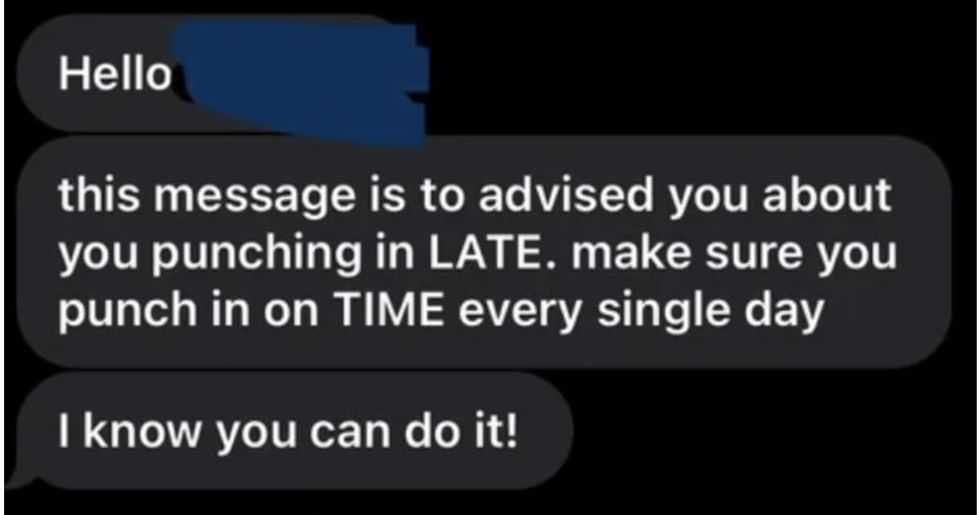 A reddit commentReddit |
A reddit commentReddit | 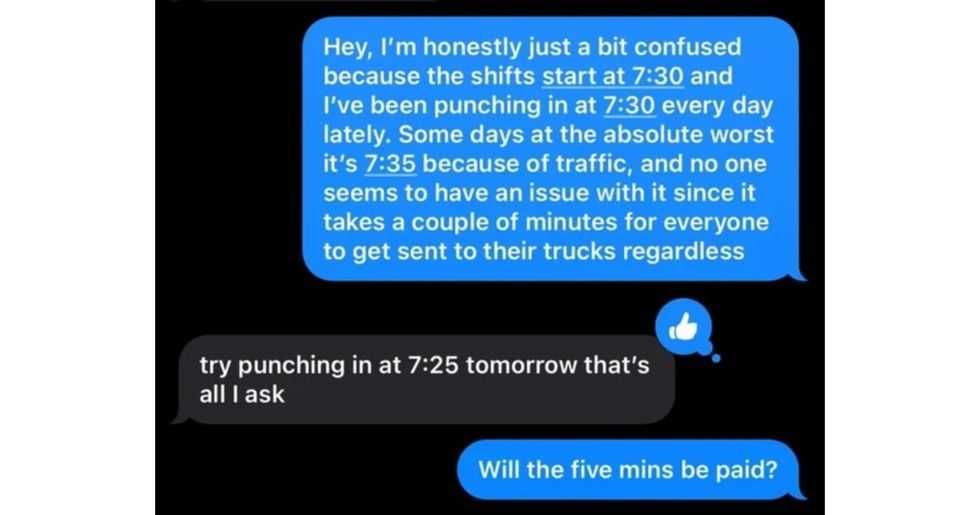 A Reddit commentReddit |
A Reddit commentReddit |  A Reddit commentReddit |
A Reddit commentReddit |  Stressed-out employee stares at their computerCanva
Stressed-out employee stares at their computerCanva
 Who knows what adventures the bottle had before being discovered.
Who knows what adventures the bottle had before being discovered. 
 Gif of young girl looking at someone suspiciously via
Gif of young girl looking at someone suspiciously via 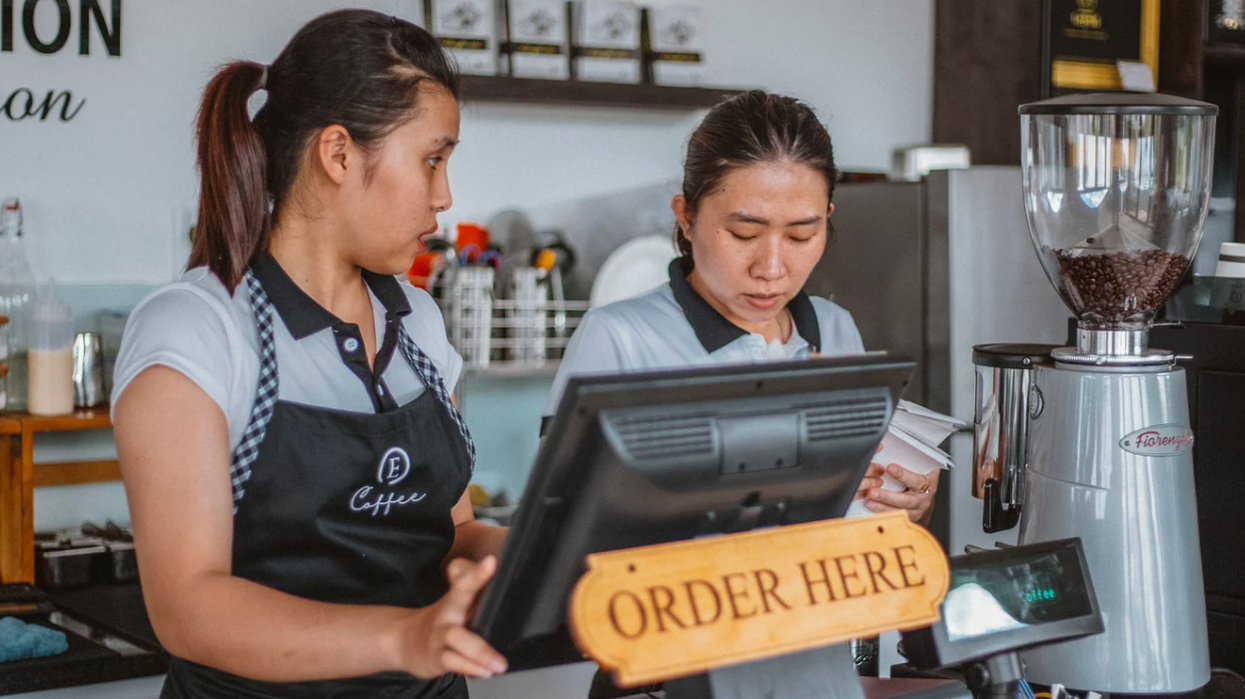

 A bartender makes a drinkCanva
A bartender makes a drinkCanva